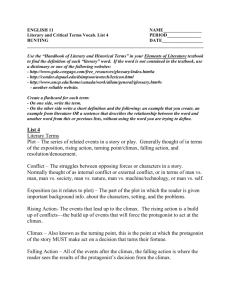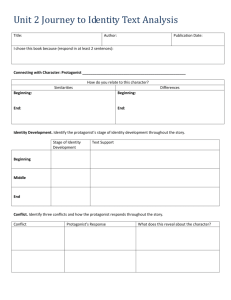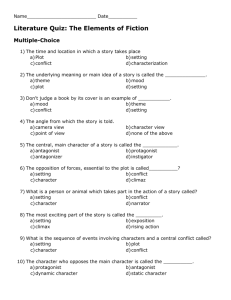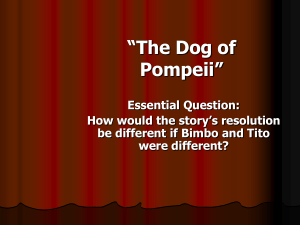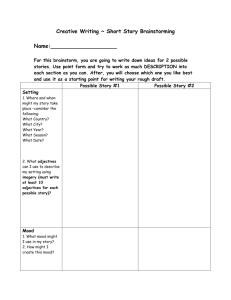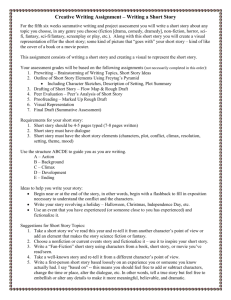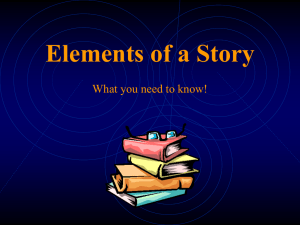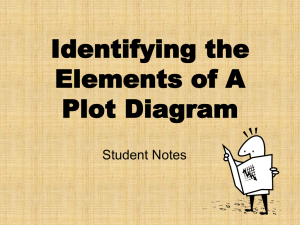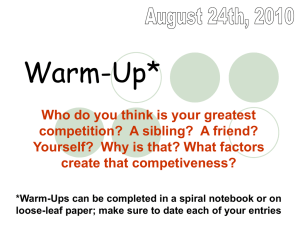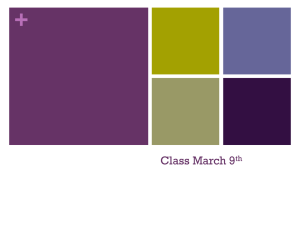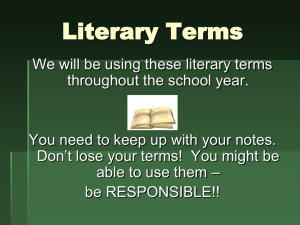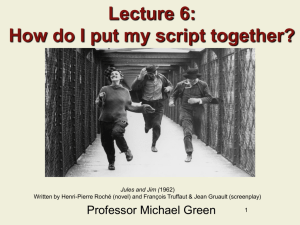The Interlopers Short Story Line Plot
advertisement
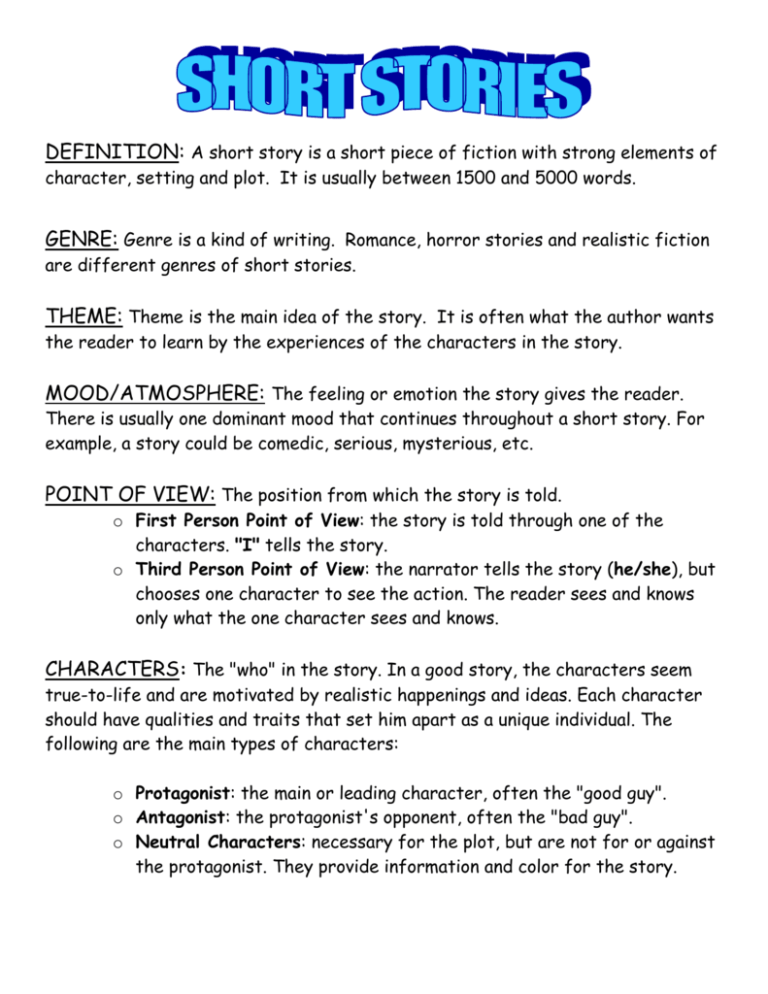
DEFINITION: A short story is a short piece of fiction with strong elements of character, setting and plot. It is usually between 1500 and 5000 words. GENRE: Genre is a kind of writing. Romance, horror stories and realistic fiction are different genres of short stories. THEME: Theme is the main idea of the story. It is often what the author wants the reader to learn by the experiences of the characters in the story. MOOD/ATMOSPHERE: The feeling or emotion the story gives the reader. There is usually one dominant mood that continues throughout a short story. For example, a story could be comedic, serious, mysterious, etc. POINT OF VIEW: The position from which the story is told. o First Person Point of View: the story is told through one of the characters. "I" tells the story. o Third Person Point of View: the narrator tells the story (he/she), but chooses one character to see the action. The reader sees and knows only what the one character sees and knows. CHARACTERS: The "who" in the story. In a good story, the characters seem true-to-life and are motivated by realistic happenings and ideas. Each character should have qualities and traits that set him apart as a unique individual. The following are the main types of characters: o Protagonist: the main or leading character, often the "good guy". o Antagonist: the protagonist's opponent, often the "bad guy". o Neutral Characters: necessary for the plot, but are not for or against the protagonist. They provide information and color for the story. SETTING: The time and place of the story. The setting should be believable and contribute to the mood or atmosphere of the story. TIME SPAN: The amount of time in the characters' lives that the story covers. CONFLICT: the protagonist's struggle in the story. o Internal Conflict-character verses self o External Conflicts-character verses character, character verses environment (nature, society, supernatural, or unknown) PLOT STRUCTURE: The Short Story Pyramid Climax Falling Action Rising Action Initial Incident Exposition/ Introduction Denouement or Resolution Exposition/Introduction The mood and conditions existing at the beginning of the story. The time and place (setting) is identified. The main characters with their positions, circumstances, and relationships to one another are established. Initial incident the initial incident or complication that "gets things going", thus beginning the conflict that continues throughout the story. Rising Action the part of the story, including the exposition, in which the tension rises. Climax the moment when the action comes to its highest point of conflict; the highest point of emotional intensity in the story point where the conflict is solved usually marks the turning point in the affairs of the protagonist fortunes Falling Action the part of the story, following the climax and leading to the resolution, in which there is a sharp decline in tension. Denouement or Resolution The final resolution of the plot is when the problem is worked out. Denouement actually means the "unknotting." It's the final unraveling of a plot; the solution of a mystery; an explanation or outcome. Short Story Planning Page Introduction: Setting/Characters Initial incident Rising Action Climax Falling Action Conclusion

